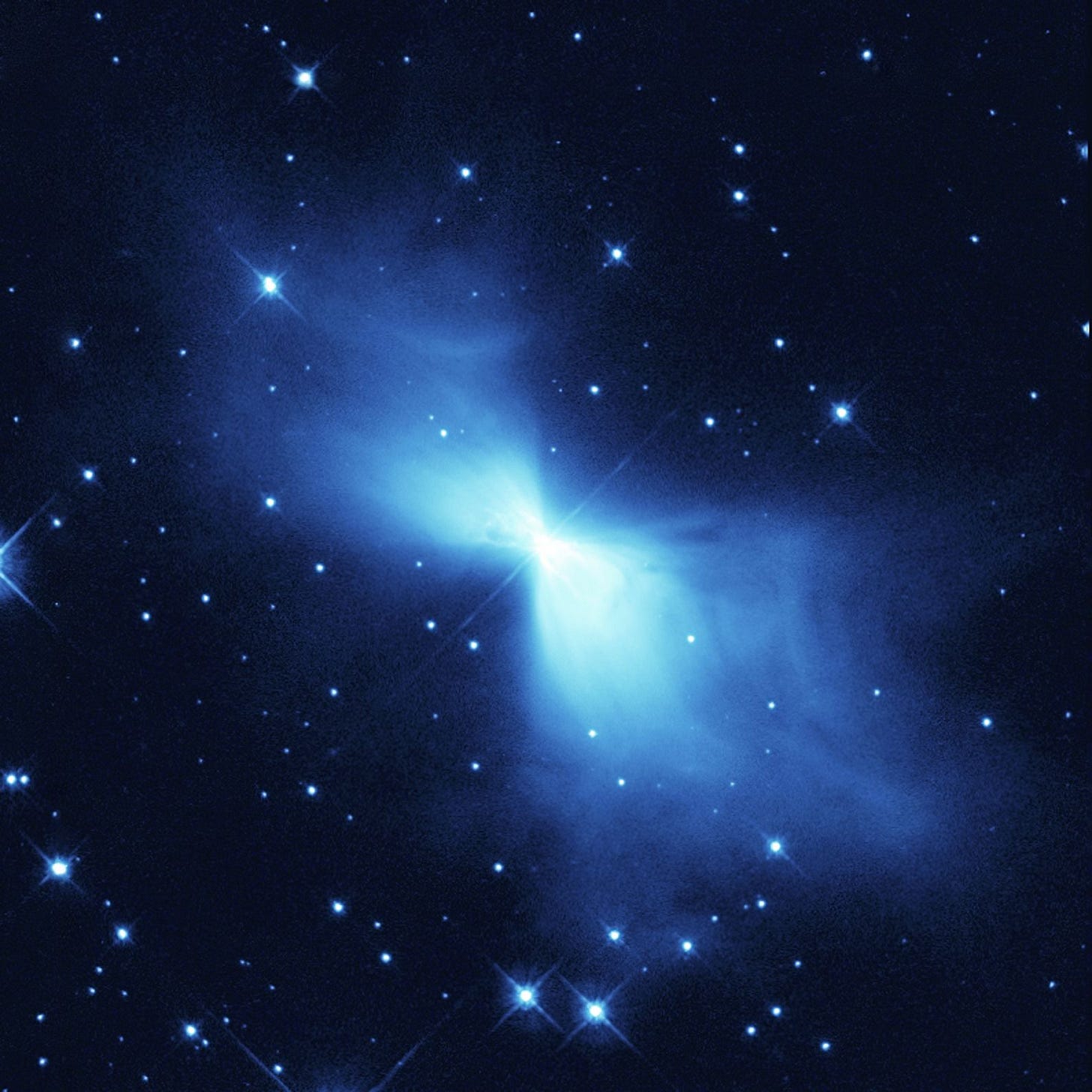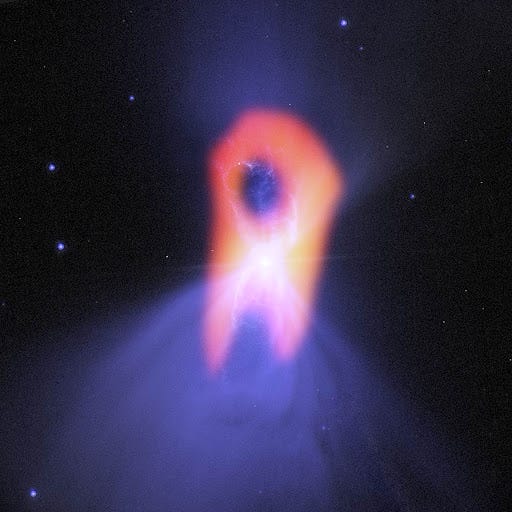The coldest place in the universe
No, it's not Canada
What happens when things get cold? That’s a pretty complex question. Most of the time they condense and freeze, but that’s the only cold that we’re used to. Today we’ll challenge our everyday perceptions of the idea of “cold”. Because all it really is is the lack of energy. Energy in objects, not you—just because you had a long day at work doesn’t mean you can forgo the AC.
A long time ago, in literally a galaxy far away, there’s a nebula. At about 5,000 light-years away, this dying star isn’t just far from us, it’s really far. Was that emphasis necessary? Probably not. The point is we’ll never get to go there. While that may sound sad, it just might be a good thing. Because in this nebula, adorably named the Boomerang Nebula, there exists the coldest naturally occurring place in the known Universe. Colder than space itself. Woah woah woah, wait a minute. How is that possible? If coldness is the lack of energy, how isn’t space as cold as it gets? There’s literally nothing in space. Slow down there, tiger. We’ll get there. For now, just take a seat, grab a blanket and a hot cup of tea, because we’re about to turn down the thermostat.
We’ll start by relearning all the different types of temperatures. There is Fahrenheit, Celsius, Kelvin, and Rankine. The first two you know: one makes intuitive sense, and the other one is used in the United States. The second two, however, are a bit different; but they serve the same purpose. Kelvin and Rankine are the Metric and English units, respectively, for temperature where 0 degrees is absolute zero (the state at which atoms stop moving). To convert to these temperatures you simply subtract a constant number from the everyday temperatures and boom, you’ve got it referenced to absolute zero. For example, Rankine is equal to Fahrenheit minus 459. Nice and simple. From here on out we’ll talk mostly in terms of Rankine. Where, as I mentioned, zero degrees is when atoms stop moving, not a cold day in Chicago.
All things have a freezing point. Doesn’t matter what it is. Water’s freezing point is 32 degrees F. Oxygen’s is -362 degrees F. While that’s pretty darn cold, it’s not nearly absolute zero (-459 degrees F). Temperature is simply a measure of how quickly atoms are bouncing around. As you heat something up, its atoms get more and more excited, and they speed up. Contrastingly, when you cool something down, its atoms get slower and slower, causing them to condense together. That’s why when you consider water: steam is less dense and hotter than water, which is less dense and hotter than ice, etc. This trend continues all the way down to absolute zero. As you approach it, the atoms move slower, and slower, and eventually stop moving altogether.
Okay, now let’s take this information into today’s discussion: the coldest place in the universe. The Boomerang Nebula is a lonely little place out in the stars that you can’t see with a normal telescope. But scientists can, and they can see the little bugger in all of its beauty. This nebula has a star at its center, like our solar system, but that star is a few billion years further along in its life than our Sun. It is rapidly expanding to a point where it will essentially run out of fuel to burn, and flicker out. We see this happening all over the universe and usually it’s no big deal. But the Boomerang Nebula has one unique agent of chaos… [5]
Scientists have recently discovered evidence that another, smaller star fell into the larger dying one. This caused extreme gravitational anomalies and outflow of gas unparalleled in everyday universe life. This interaction is thought to be propelling massive amounts of gas out of the system at speeds of 93 miles per second. Think the mass of multiple Earths being propelled 15 times faster than the ISS orbits. Yeah… And scientists believe that this immense outflow corresponds to the cold temperatures. As we usually do, take a car as an example. On a hot summer day with the windows down, you approach a stoplight and roll to a stop. The air on your outstretched hand feels hot. But when the light turns green, and you speed up, the air begins to move past your arm, and it suddenly feels colder. The faster a gas is moving, the colder it can get. And in the case of the gas flowing out of the Boomerang Nebula, it goes as fast and gets just about as cold as you can. [3]
There are points of this nebula that get to temperatures of roughly -457.87 degrees F. 1.8 Rankine. 1.8 degrees above absolute zero. That’s even colder than the background radiation left over from the big bang! (5.4 Rankine) FYI empty space in the universe does, in fact, have little particles that are always whizzing around. They’re scarce, but they’re moving quick, so based on our earlier conversation they must have some temperature associated with them—5.4 Rankine. [1]
So there you have it! The intro, the buildup, and the punch line! Maybe think twice the next time you get a chill on a cool Fall day (so excited for that) and consider yourself lucky. Some inanimate nebulous clouds don’t have it so easy. Thanks for reading this week’s edition! See you next time!
Check us out on social media: Facebook | Twitter
Check out last week’s newsletter here.
For more details…
[Cover Image] https://en.wikipedia.org/wiki/Boomerang_Nebula
[4] https://iopscience.iop.org/article/10.3847/1538-4357/aa5d0d (Check out this one if you’re ever convinced I don’t do real research for you guys)
[5] http://www.sci-news.com/astronomy/science-boomerang-nebula-01493.html



